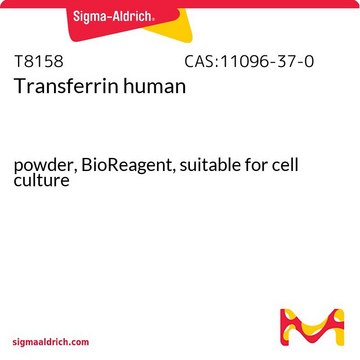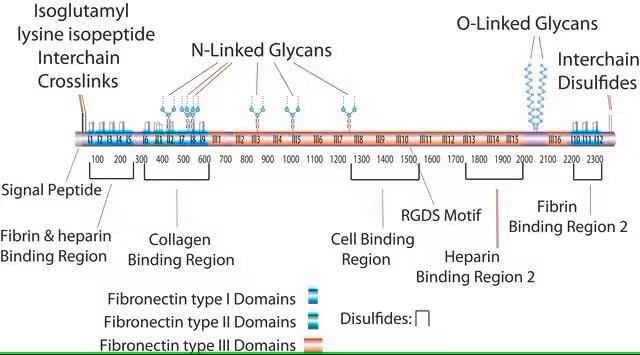11074547001
Roche
Insulin-Transferrin-Sodium Selenite Supplement
suitable for cell culture, lyophilized, pkg of 50 mg (for 5 l medium)
Synonyme(s) :
ITS
About This Item
Produits recommandés
Source biologique
human serum (transferrin)
synthetic (sodium selenite)
Niveau de qualité
Produit recombinant
expressed in human cells
Stérilité
non-sterile; 0.2 μm filtered
Pureté
>98% (Transferrin, SDS-PAGE)
>99% (Insulin, HPLC)
>99% (Sodium selenite)
Forme
lyophilized
Conditionnement
pkg of 50 mg (for 5 l medium)
Fabricant/nom de marque
Roche
Technique(s)
cell culture | mammalian: suitable
Solubilité
water: miscible
Température de stockage
2-8°C
Informations sur le gène
bovine ... INS(280829)
human ... TFRC(7037)
Description générale
Source: Insulin- bovine pancreas; transferrin- human serum; Sodium selenite-synthetic
Application
Notes préparatoires
Storage conditions (working solution): -15 to -25 °C.
Prepare appropriate aliquots and avoid repeated freezing and thawing.
Reconstitution
Further dilution with culture medium.
Autres remarques
Code de la classe de stockage
11 - Combustible Solids
Classe de danger pour l'eau (WGK)
WGK 1
Point d'éclair (°F)
does not flash
Point d'éclair (°C)
does not flash
Certificats d'analyse (COA)
Recherchez un Certificats d'analyse (COA) en saisissant le numéro de lot du produit. Les numéros de lot figurent sur l'étiquette du produit après les mots "Lot" ou "Batch".
Déjà en possession de ce produit ?
Retrouvez la documentation relative aux produits que vous avez récemment achetés dans la Bibliothèque de documents.
Les clients ont également consulté
Notre équipe de scientifiques dispose d'une expérience dans tous les secteurs de la recherche, notamment en sciences de la vie, science des matériaux, synthèse chimique, chromatographie, analyse et dans de nombreux autres domaines..
Contacter notre Service technique








